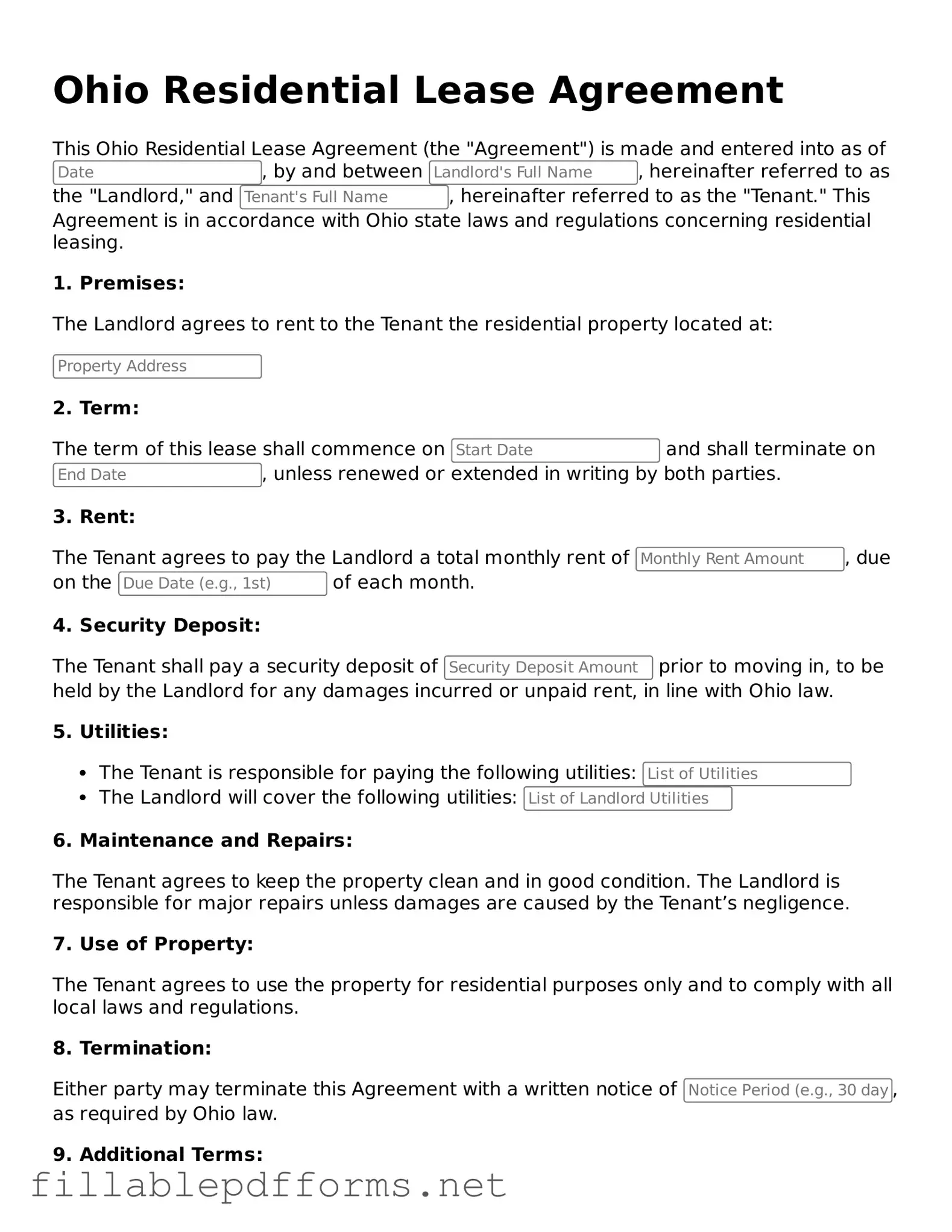Attorney-Verified Residential Lease Agreement Form for Ohio State
The Ohio Residential Lease Agreement is a legal document that outlines the terms and conditions under which a landlord rents property to a tenant. This agreement serves as a binding contract, ensuring that both parties understand their rights and responsibilities. Whether you're a landlord or a tenant, knowing the details of this form is crucial for a smooth rental experience.
Launch Editor Here
